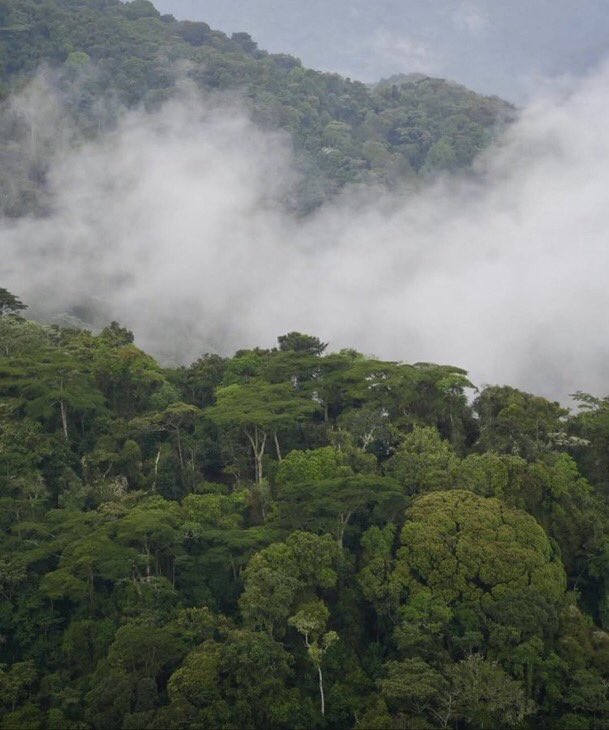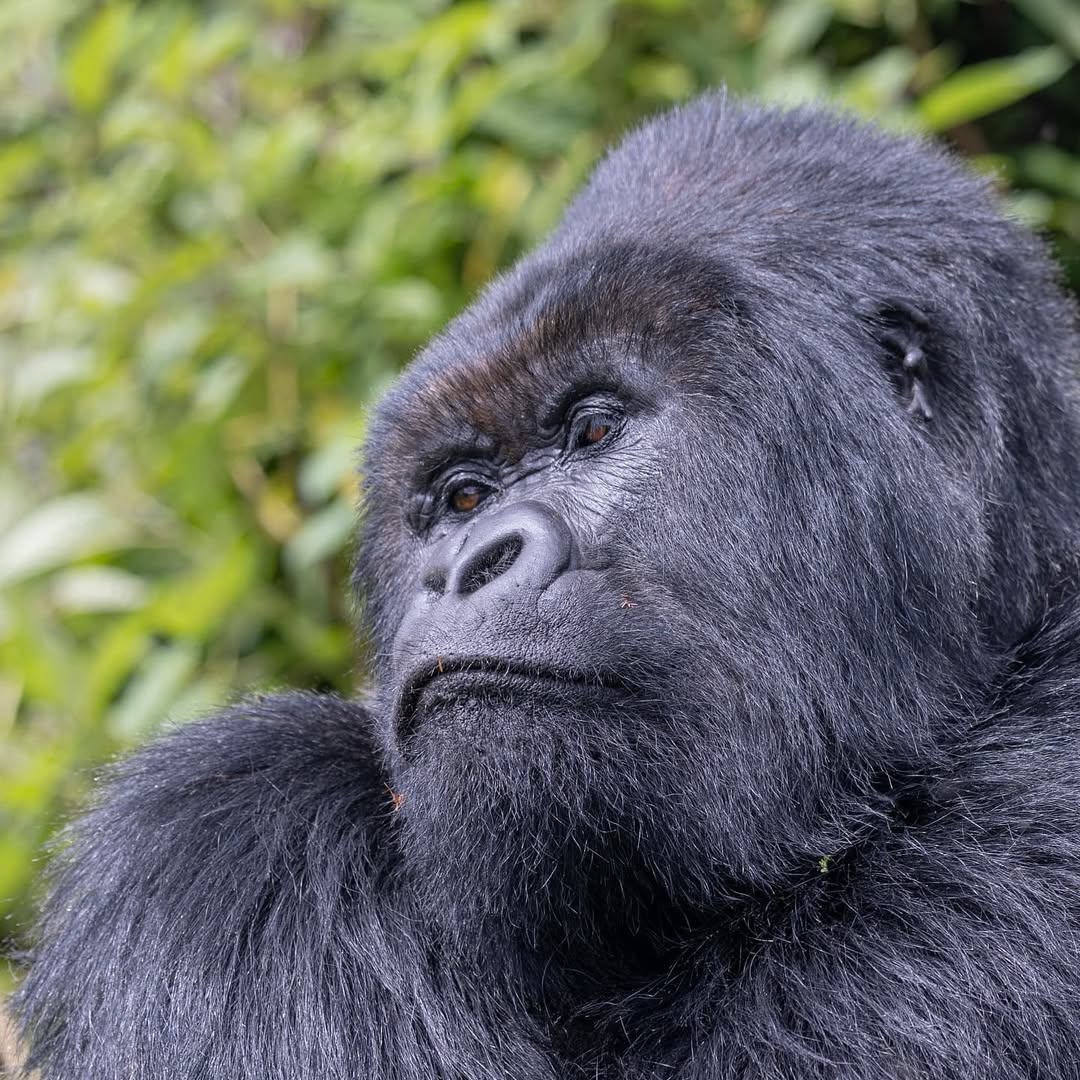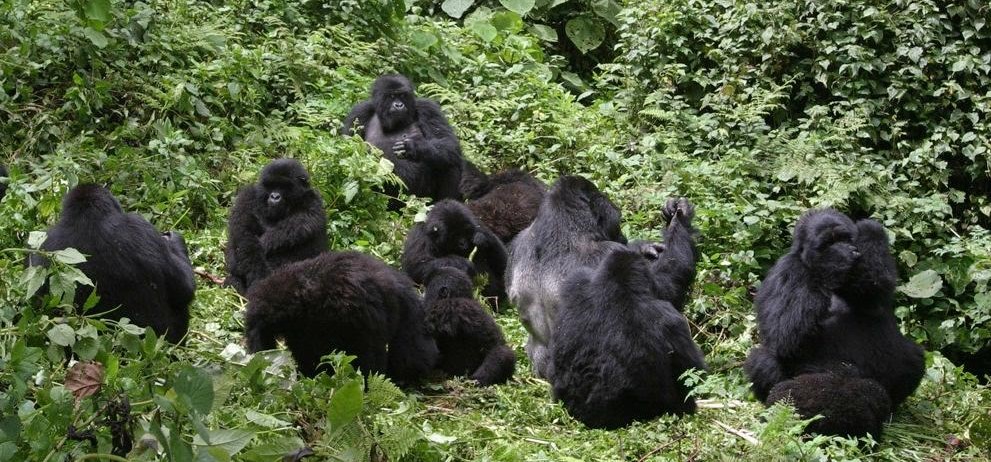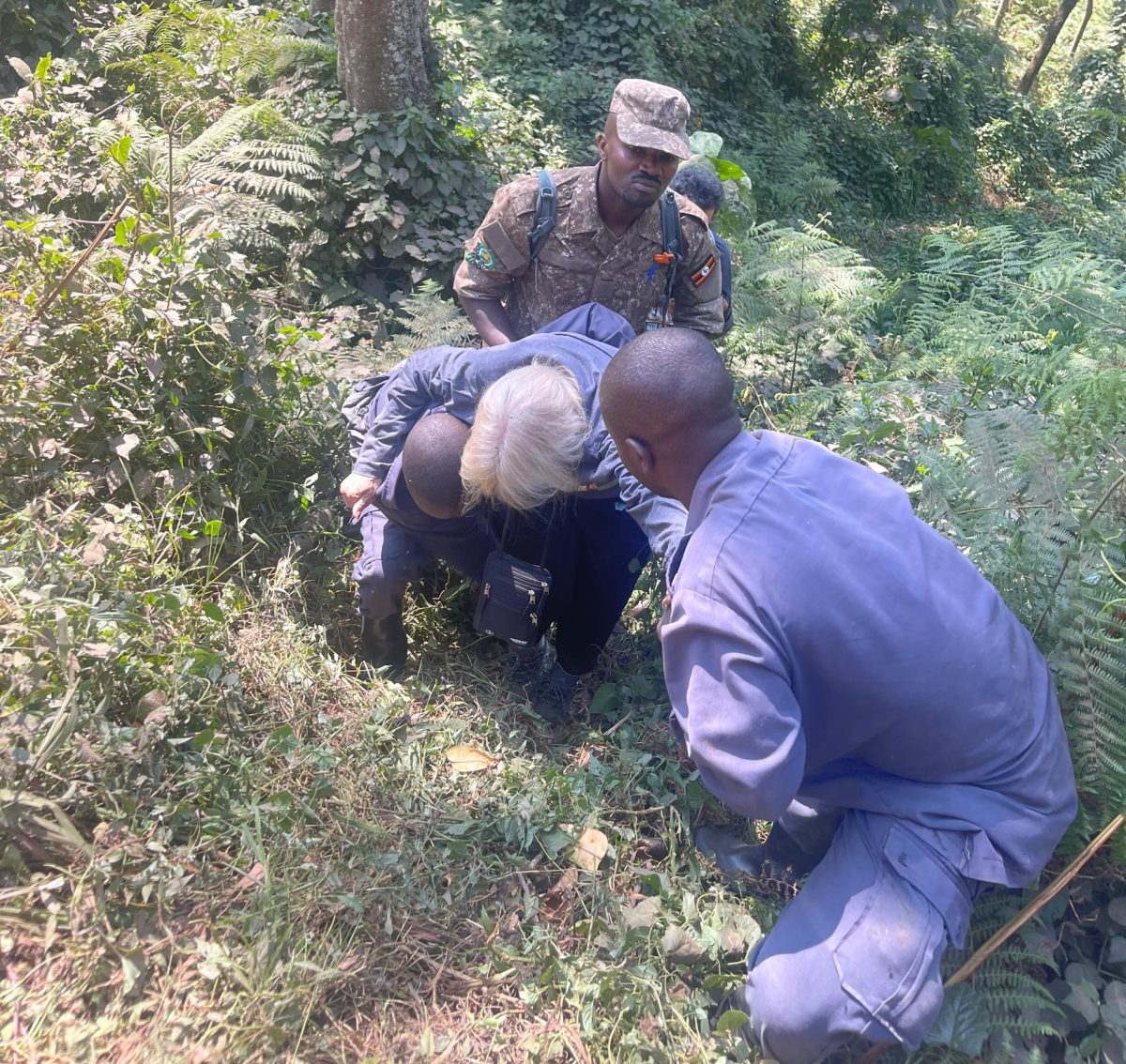Social Hierarchy in Gorilla Families
May 16, 2025The Life of a Silverback Gorilla
May 16, 2025Mountain gorilla trekking is one of the most intimate and awe-inspiring wildlife experiences on Earth. These endangered giants are found in only two main locations: Bwindi Impenetrable National Park in Uganda and the Virunga Massif, which includes Volcanoes National Park in Rwanda, Mgahinga Gorilla National Park in Uganda, and Virunga National Park in the Democratic Republic of Congo.
While all mountain gorillas belong to the same subspecies (Gorilla beringei beringei), visitors often wonder: Are the gorillas in Bwindi different from those in Volcanoes? The answer is yes—and no. Genetically, they are the same, but the environment, appearance, behavior, and trekking experience can differ significantly between the two destinations. Here’s a deeper look into what makes each gorilla population—and the experience of visiting them—unique.
1. Habitat and Terrain
Bwindi Impenetrable Forest – Uganda
Bwindi is exactly what its name suggests—a tangled, ancient rainforest that has remained untouched for over 25,000 years. The park sits on the edge of the Albertine Rift Valley, with altitudes ranging from 1,160 to 2,607 meters. The terrain is rugged and steep, covered with dense undergrowth, thick vines, and towering trees that block much of the sunlight. This makes the forest feel almost enchanted, like a hidden world untouched by time.
Trekking in Bwindi often involves navigating through narrow trails, slippery slopes, and overgrown vegetation. Visitors sometimes have to follow gorilla families deep into the jungle, climbing over logs or pushing through foliage. It’s an adventurous and wild experience that immerses you in nature.
Volcanoes National Park – Rwanda
In contrast, Volcanoes National Park lies on the slopes of the Virunga Mountains, a chain of extinct volcanoes that form a dramatic, mist-covered backdrop. The park’s elevation is higher, ranging from 2,500 to over 4,500 meters, and its vegetation includes bamboo forests, Hagenia woodlands, and alpine meadows..

The open nature of the forest in Volcanoes often means clearer trails and better visibility when observing gorillas. For example, you might encounter a gorilla family relaxing in a bamboo grove with the volcanoes towering behind them. While hikes can still be strenuous due to the altitude, the vegetation is generally less dense than in Bwindi

2. Physical Appearance
While both populations are mountain gorillas, subtle physical differences have been observed by researchers and guides who spend years studying these animals.
In Volcanoes, gorillas tend to have longer, thicker fur. This adaptation helps them cope with the cooler temperatures and higher elevations found in the Virunga Mountains. A silverback in Volcanoes might appear more robust and woolly, especially when seen early in the morning with mist hanging in the air.
In contrast, Bwindi gorillas may have slightly shorter and sleeker fur, likely due to the warmer and more humid climate in the lower elevations of Bwindi. Their overall body structure is the same, but seasoned trackers and primatologists sometimes notice slight distinctions in facial features and fur density.
It’s worth noting that these differences are subtle and not officially recognized as distinct subspecies, though some researchers have suggested that Bwindi’s population might represent a unique ecological variant.
3. Group Size and Composition
Gorilla families vary widely in size, but trends show that gorilla groups in Volcanoes tend to be larger on average than those in Bwindi.
In Volcanoes National Park, families like the famous Susa Group, once studied by Dian Fossey herself, have had over 30 individuals, including multiple silverbacks, adult females, juveniles, and infants. The Kwitonda and Hirwa groups have also been known for their large sizes, sometimes making sightings lively and dynamic with plenty of social interaction.

In Bwindi, gorilla families tend to be smaller, often comprising 6 to 15 individuals. For example, the Mubare group, the first habituated family in Bwindi, usually has fewer than 10 members. While smaller in size, these families often allow for more intimate, quiet moments, like observing a mother gently grooming her baby in a clearing.
4. Gorilla Behavior and Habituation
Gorillas in both parks are highly intelligent and socially complex, but their behavior can be influenced by habitat, food availability, and human presence.
In Volcanoes, gorillas often feed and rest in more open areas, especially in bamboo zones where young shoots are abundant. This results in longer viewing times with better visibility, which is excellent for photography and observation.
In Bwindi, the dense vegetation means gorillas are often partially obscured by vines and bushes, and visitors may need to reposition themselves frequently. However, this also adds to the thrill—finding the gorillas feels more like a jungle expedition. Bwindi gorillas may also feed on a wider variety of plants, including leaves, fruits, and tree bark, due to the forest’s exceptional biodiversity.

5. Trekking Experience
Trekking in Bwindi
Bwindi offers a wilder, more physically demanding experience. Treks can range from 30 minutes to over 6 hours, depending on the location of the gorilla family that day. Some groups require steep climbs and careful footwork through thick undergrowth. Trekkers often describe the journey as a true rainforest adventure.
There are four major trailheads in Bwindi: Buhoma, Ruhija, Rushaga, and Nkuringo. Each offers a different type of terrain, scenery, and gorilla family. For example, the Nkuringo sector is known for its steep ascents, while Rushaga offers access to both standard treks and the special Gorilla Habituation Experience.
Trekking in Volcanoes
Volcanoes National Park generally provides a more structured and less strenuous trekking experience. The park is well-organized, with guides, porters, and rangers efficiently leading visitors to their assigned families. Because the forest is more open, many gorilla groups are reachable within 1–2 hours of hiking, making it ideal for travelers with limited time or lower fitness levels.
Additionally, the proximity to Kigali (only a 2.5-hour drive) makes it possible to do a 2- or 3-day gorilla trekking itinerary without internal flights or long drives.
6. Accessibility and Travel Logistics
Volcanoes National Park is easily accessible from Kigali International Airport, making it a favorite for short luxury safaris. Many visitors fly into Kigali, spend a night in Musanze or a nearby eco-lodge, trek the next morning, and return to the airport the same day or with minimal travel time.
Bwindi, on the other hand, requires more planning and often forms part of a longer Uganda itinerary. Travelers may choose to fly into Entebbe and take a domestic flight to Kihihi or Kisoro, or drive 8–10 hours across Uganda, visiting other national parks like Queen Elizabeth or Lake Mburo along the way. This makes Bwindi ideal for multi-destination safaris, combining wildlife game drives, chimpanzee tracking, and cultural experiences.
7. Conservation and Tourism Approach
Rwanda has positioned itself as a high-end gorilla tourism destination, with gorilla trekking permits priced at $1,500 per person per trek. The emphasis is on exclusive, low-volume, high-value tourism. Luxury lodges such as Bisate Lodge and Singita Kwitonda cater to guests seeking a premium, conservation-focused experience.
Uganda offers a more diverse range of options, with gorilla permits priced at $700 per person, making it more accessible for mid-range and budget travelers. Bwindi is also home to the Gorilla Habituation Experience—a unique program where visitors can spend up to 4 hours with a semi-habituated gorilla family under the guidance of researchers and trackers. This is not available in Volcanoes and appeals to photographers and primate enthusiasts.
Both countries reinvest a portion of permit fees into community development and gorilla conservation, helping local communities benefit directly from gorilla tourism.
Final Thoughts
While the mountain gorillas of Bwindi and Volcanoes are genetically the same, the experience of meeting them feels completely different depending on where you go. In Bwindi, you’re immersed in a raw, untouched jungle where the trek itself is part of the adventure. In Volcanoes, you walk the misty slopes of volcanoes once explored by Dian Fossey, often with panoramic views and easier access.
There’s no right or wrong choice—only different paths to the same unforgettable encounter. Some travelers even opt to trek in both parks, gaining a deeper appreciation of the gorillas’ adaptability, behavior, and environment. No matter which destination you choose, you’ll walk away changed—with a newfound respect for these peaceful giants and a powerful story to tell.
How to Get to Bwindi and Volcanoes
Getting to Bwindi Impenetrable National Park – Uganda
Reaching Bwindi may require a bit more planning, but the journey offers the opportunity to explore Uganda’s scenic countryside and national parks.
By Road:
The most common route is from Entebbe or Kampala, which takes 8–10 hours by car depending on the gorilla sector (Buhoma, Ruhija, Rushaga, or Nkuringo). Many travelers break the journey by staying overnight at Lake Mburo National Park or Queen Elizabeth National Park, combining game drives with their gorilla trek.
For example, a popular route is:
Entebbe → Lake Mburo → Queen Elizabeth → Bwindi, allowing travelers to experience zebras, lions, and hippos en route.
By Air:
Domestic flights operated by Aerolink Uganda or Bar Aviation offer daily connections from Entebbe International Airport to Kihihi Airstrip (for Buhoma and Ruhija) or Kisoro Airstrip (for Rushaga and Nkuringo). From these airstrips, it’s a 1–2 hour scenic drive to the gorilla trekking trailheads.
Cross-border from Rwanda:
Some travelers fly into Kigali (Rwanda) and then drive 4–6 hours to Bwindi, crossing via the Gatuna or Cyanika borders. This option is especially convenient for those visiting both countries.
Getting to Volcanoes National Park – Rwanda
One of the main advantages of trekking gorillas in Rwanda is how quick and easy it is to access the park.
By Road from Kigali:
Volcanoes National Park is located in Musanze (formerly Ruhengeri), just 2.5 hours’ drive from Kigali International Airport on well-paved roads. This makes it possible to do a 3-day round trip gorilla trekking itinerary with minimal travel time.
For example:
Day 1: Arrive Kigali, transfer to Musanze
Day 2: Gorilla trek in Volcanoes
Day 3: Return to Kigali and depart
This easy access is one reason why Rwanda is a favorite for luxury short safaris and travelers with limited time.
By Air (Helicopter):
Luxury travelers can opt for a helicopter transfer from Kigali to Volcanoes using Akagera Aviation, which takes just 30 minutes and offers stunning views of the Virunga Volcanoes.
